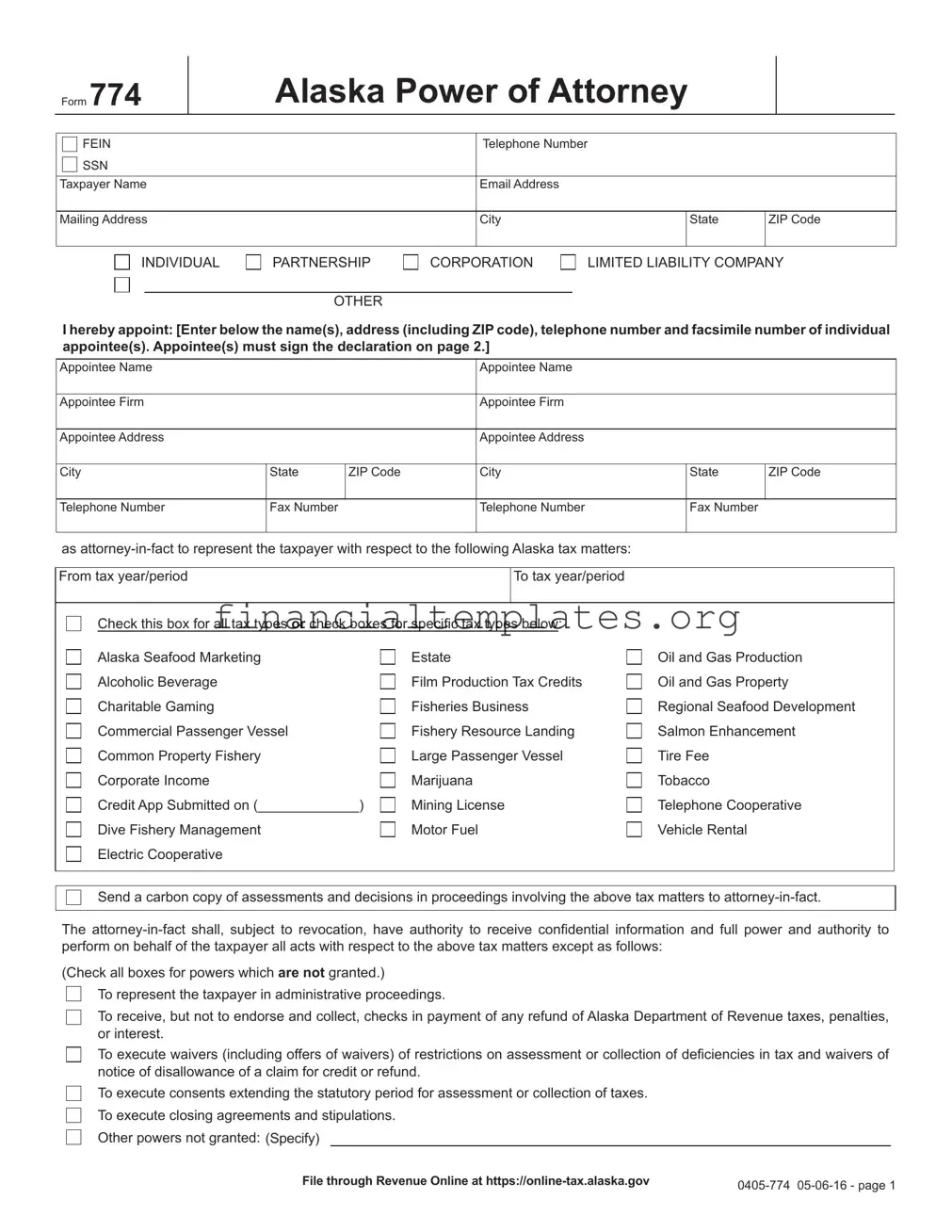 This power of attorney revokes all prior powers of attorney filed with respect to the same matters and years or periods covered by this instrument, except the following: (Specify and attach copies of the powers of attorney)
This power of attorney revokes all prior powers of attorney filed with respect to the same matters and years or periods covered by this instrument, except the following: (Specify and attach copies of the powers of attorney)
Signature of Taxpayer – If signed by a corporate officer, partner, or fiduciary on behalf of the taxpayer, I certify that I have the authority to execute this power of attorney on behalf of the taxpayer.
Signature |
Date |
Printed Name |
Printed Title |
DECLARATION OF REPRESENTATIVE
The undersigned representative hereby declares under the penalty of unsworn falsification that he/she is an individual authorized to represent a taxpayer before the Department of Revenue and that he/she is authorized to represent the named taxpayer in this matter.
Signature |
Date |
Signature |
Date |
POWER OF ATTORNEY INFORMATION
USE THIS FORM TO GRANT AUTHORITY TO AN INDIVIDUAL TO REPRESENT YOU BEFORE THE DEPARTMENT AND TO RECEIVE TAX INFORMATION.
An individual who is not the taxpayer must be a recognized representative before the individual may represent a taxpayer before the Department of Revenue. A recognized representative is an individual who is appointed as an attorney-in-fact under a power of attorney and who is an attorney in good standing in any state, a certified public accountant licensed in any state, an individual enrolled to practice before the Internal Revenue Service and is in active status, or an individual in a special status with a taxpayer. An individual in a special status with a taxpayer includes an officer or regular full-time employee of a corporation or other organization or employer, or an individual who is a member of the immediate family of the taxpayer. An individual who prepares or signs a return may represent a taxpayer with respect to that return. Upon written application and in the discretion of the department, an individual other than the one described above may represent a taxpayer in a particular matter.
A power of attorney is a document signed by the taxpayer by which another individual is given the authority to appear before the department and act for the taxpayer. An attorney-in-fact is an agent who is authorized by the taxpayer under the power of attorney to act on behalf of the taxpayer. The acts of the attorney-in-fact are binding on the taxpayer. A power of attorney may be general or it may be limited. The department form conveys a general power of attorney; a taxpayer must designate on the form if the powers granted to the representative are limited.
Generally, the power of attorney encompasses all matters relating to a taxpayer’s rights, privileges, or liabilities under laws and regulations administered by the department. This includes, for example, such things as the preparation and filing of necessary documents, receipt of otherwise confidential tax particulars, correspondence and communication with department personnel, and representation of a taxpayer at audits, conferences, hearing, and other meetings.
Forms filed through Revenue Online are considered original forms and do not need to be mailed in. The original of this form, if not filed through Revenue Online, must be mailed to the department.



 This power of attorney revokes all prior powers of attorney filed with respect to the same matters and years or periods covered by this instrument, except the following: (Specify and attach copies of the powers of attorney)
This power of attorney revokes all prior powers of attorney filed with respect to the same matters and years or periods covered by this instrument, except the following: (Specify and attach copies of the powers of attorney)